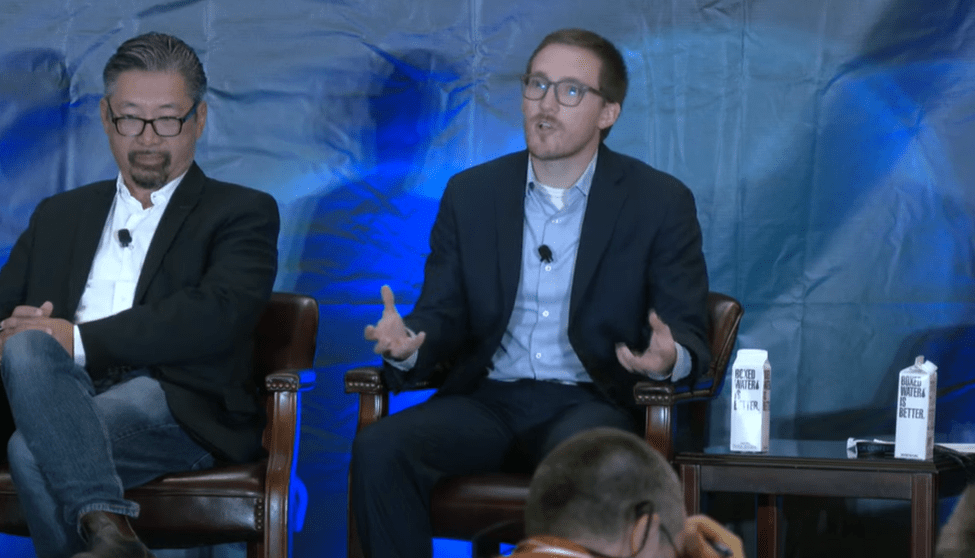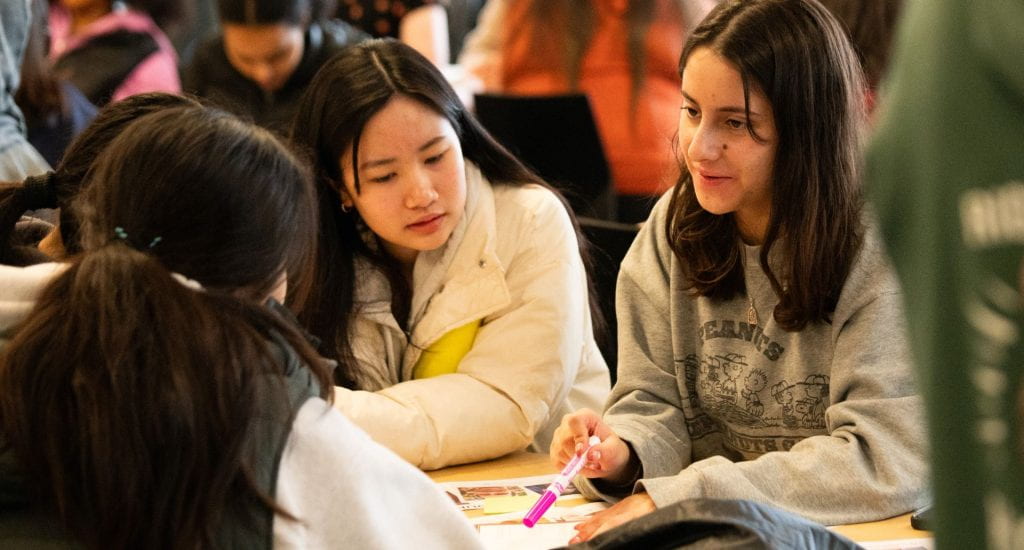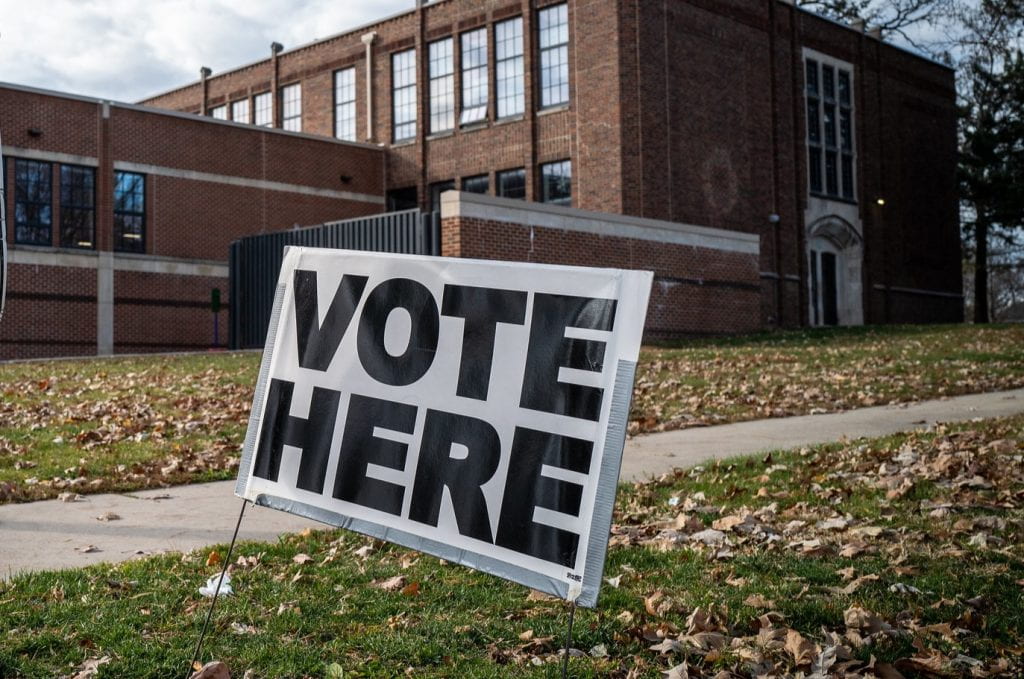This blog post features a roundup of recent publication highlights and other research news affiliated with the UW Center for an Informed Public, its research and researchers.
CIP researchers find that video headlines served by Google are ‘a notable pathway’ to content that may undermine trust in elections’
During the Trust and Safety Research Conference, hosted by the Stanford Internet Observatory in September, Center for an Informed Public research analyst Morgan Wack, a UW Political Science doctoral candidate (pictured above), presented findings from “Auditing Google’s Search Headlines as a Potential Gateway to Misleading Content: Evidence from the 2020 U.S. Election,” a peer-reviewed paper Wack co-led with UW Human Centered Design & Engineering doctoral candidate Himanshu Zade, with CIP co-authors Yuanrui Zhang, Kate Starbird, Ryan Calo, Jason Young, and Jevin D. West. One of the potentially more actionable findings is that “the headlines of the video content reported in our Google Search results pages contained a disproportionate amount of undermining-trust content when compared to alternative SERP verticals (search results, stories, and advertisements).” Indeed, the researchers say, “video headlines served to be a notable pathway to content with the potential to undermine trust.”
- Read the paper in the Journal of Online Trust and Safety
- Read more about this paper in Tech Policy Press
- Himanshu Zade’s explainer tweet thread
***
Other research highlights
- In September, Harvard Kennedy School Misinformation Review published “Community-based strategies for combating misinformation: Lessons from a popular culture fandom,” a peer-reviewed article by CIP faculty member Jin Ha Lee, a UW iSchool associate professor, with co-authors, including CIP co-founder and iSchool associate professor Emma S. Spiro. In the article, Lee, Spiro and co-authors explore everyday misinformation in the context of networked online environments through the lens of one of the fastest-growing international fandoms, ARMY, the global fandom supporting the Korean music group BTS.
- Spiro is also a co-author on “Temporal trends in health worker social media communication during the COVID-19 pandemic,” a paper published in September in the journal Research in Nursing & Health.
- In an Oct. 26 article published in Scientific American, “To fight misinformation, we need to teach that science is dynamic,” CIP faculty member and UW Biology professor Carl T. Bergstrom, with co-authors Daniel R. Pimentel and Jonathan Osborne (both from Stanford University), explore how “science is a social process, and teaching students how researchers work in tandem to develop facts will make them less likely to be duped by falsehoods.”
- In a November episode of “JCMC: The Discussion Section,” a podcast series hosted by Journal of Computer-Mediated Communication editor in chief Nicole Ellison, JCMC associate editor and CIP faculty member Katy E. Pearce, an associate professor in the UW Department of Communication, shared insights from her research and the need for more study of private social media platforms like WhatsApp and closed groups on Facebook. “These are incredibly important to a lot of people, and I think — given that all of us on this call are based in the U.S., where they’re popular, but not like they are internationally — it’s left a real gap in terms of our theorizing. While there are certainly really good empirical papers on specific mobile messaging apps or specific types of private social media,” those platforms are also undertheorized.
- In “Misinformation or activism?: Analyzing networked moral panic through an exploration of #SaveTheChildren,” a paper published in November in the journal Information, Communication & Society, CIP researchers Stephen Prochaska, an iSchool doctoral student, and Rachel E. Moran, a CIP postdoctoral scholar, draw upon a thematic analysis of #SaveTheChildren posts on Instagram and examine the motivations, tactics and desired outcomes of the movement. As Moran noted in a Nov. 17 tweet thread: “Emergent themes highlight the pervasive spread of misinformation regarding human trafficking and the ideological, political, and social motivations of posters.”




